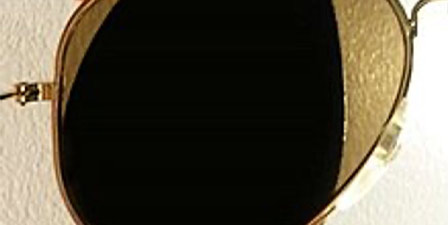This part two of three articles is from a CE course of the same title: Coping with Corridors by Barry Santini and is available at http://www.2020mag.com/ce/TTViewTest.aspx?LessonId=111755
Learning Objectives:
Upon completion of this program, the participant should be able to:
- Understand what opportunities are present for specifying progressive lens corridor lengths.
- Know when a specific corridor length is required.
- Learn the lenses and options when a specific corridor length is a requirement.
CHOOSING CORRIDOR LENGTH
To begin the choice of a corridor length, start with your fitting height, and subtract 4mm to 5 mm, which allocates enough height for a minimum useful reading area. The difference left is a good approximate number to begin determining your target corridor length.

In the above example, if the design selected only provides a choice between an 8 mm or 10 mm corridor, the final value chosen will depend upon these additional considerations:
Total Frame Height and Contour:
Frame style, size and shape may dictate an adjustment to your target corridor length to ensure the full reading area is not truncated by the contour of the frame's lower rim. Pupillary distance also places a role here, with narrower PDs more sensitive to being truncated by the upward slope of the frame's nasal eyewire.
Vertex Distance:
Closer vertex distances require shorter corridors to compensate for the reduced drop of the eye's declination intercept with the lens surface. And vice versa for long vertex distances, which then may need longer corridors.
Pantoscopic Angle:
Greater pantoscopic angles require shorter corridors, and lesser pantoscopic angles require longer corridors for the same conceptual reason stated above in vertex distance.
Rule of thumb:
Every 1-mm increase in corridor length will require approximately a 2-degree increase in eye declination. Tip: The less accommodation reserve, i.e., increasing age, the quicker the wearer will need to get to the target reading add.
RX CONSIDERATIONS
Prescription considerations can influence your selection of corridor length:
Total Add Power: Higher add powers — greater than 2.25D —feature smaller reading and narrower intermediate areas and more surface astigmatism. Therefore, a too short corridor may deliver unacceptable optics because of increased surface astigmatism.
Rx Delta: Total power change seen in a new Rx should be considered for its impact on both distance vision clarity and reading declination. The direction of change, more plus or less plus, is important to factor in as well, regardless of the specific type of ametropia.
Ametropic Error: Spectacle magnification and prism may impact your corridor choice. The minified and upwardly displaced image in a myopic Rx requires consideration of selecting a shorter value for the corridor. For hyperopic prescriptions, because of image magnification and base up prism, the opposite is true.
Center of Rotation and Dioptric Error: Hyperopic eyes have shorter axial lengths, while myopic eyes feature longer axial lengths. These axial length differences place the center of rotation of hyperopic eyes closer to the cornea, while in myopic eyes the CR further away. This, along with the fitted vertex distance, can influence the actual point where the visual axis intersects the lens when the eye rotates downward for the near gaze point.
Prism Thinning: If base down thinning prism is present, it will upwardly deviate the image at near. In higher adds, this results in a noticeable decrease of the required eye depression angle for the wearer and is important to keep in mind as you determine corridor length.
Lens Design Priority: The basic design priority of the lens, i.e., whether the distance, intermediate or reading area has been targeted to be most important, can further impact your corridor value calculation.
For example, a client with a plano DV/+2.00D add may state a preference for clear, edge-to-edge distance vision. Choosing a lens design with this as a top priority, but mated to a frame with a short fitting height, illustrates the dilemma of trying to optimize a progressive lens to both a patient's wishes and their chosen frame style.
Non-Linear Progressive Power Gradient: Traditional progressives have featured a linear slope of increasing power. Newer, special designs, optimized for computer and users of mobile devices, deliver a non-linear corridor power gradient, with the top portion of the corridor featuring a faster increase in power. Some wearer's may complain these designs intrude on their DV acuity when they are switching from a traditional or balanced design. Compounding factors here include patient posture and the amount and direction of the prescription change.
Return to the Optician’s Handbook to see the final part three of Coping with Corridors by Barry Santini
 Barry Santini, ABOM, graduated from New York Technical College in 1975 with an AAS in Ophthalmic Dispensing. He is a New York State licensed optician with contact lens certification, is ABO certified and was awarded an ABO Master in 1994. As sales manager for Tele Vue Optics from 1987 to 2003, Santini developed his knowledge of precision optics and has been an owner of Long Island Opticians in Seaford NY, from 1996 to present. Recently The Society to Advance Opticianry named Barry Santini, OO, as the 2016 Ophthalmic Optician of the Year. In addition, Santini is an amatuer astronomer and lecturer and plays bass trombone in the Brooklyn Symphony.
Barry Santini, ABOM, graduated from New York Technical College in 1975 with an AAS in Ophthalmic Dispensing. He is a New York State licensed optician with contact lens certification, is ABO certified and was awarded an ABO Master in 1994. As sales manager for Tele Vue Optics from 1987 to 2003, Santini developed his knowledge of precision optics and has been an owner of Long Island Opticians in Seaford NY, from 1996 to present. Recently The Society to Advance Opticianry named Barry Santini, OO, as the 2016 Ophthalmic Optician of the Year. In addition, Santini is an amatuer astronomer and lecturer and plays bass trombone in the Brooklyn Symphony.













